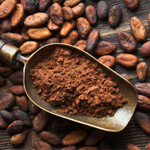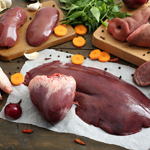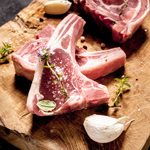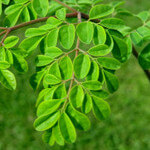 Magnesium is a vital macromineral that is needed for more than 300 biochemical reactions in the body. It regulates enzyme reactions, aids the production of energy, helps our body transport ions across our cell membranes, and more. Indeed, all of our organs require magnesium to function properly.
Magnesium is a vital macromineral that is needed for more than 300 biochemical reactions in the body. It regulates enzyme reactions, aids the production of energy, helps our body transport ions across our cell membranes, and more. Indeed, all of our organs require magnesium to function properly.
Unfortunately, magnesium deficiencies are pandemic worldwide. In the United States alone, experts estimate that between 50 and 80 percent of the population suffers from a deficiency, which can lead to anxiety, restless leg syndrome, nausea, muscle cramps, insomnia, and a host of other stress-related conditions. Though poor diets are partially to blame, the biggest reason for this pandemic is ongoing soil erosion, which has significantly reduced the mineral content of the earth. Consequently, many popular fruits and vegetables that used to contain magnesium no longer do. Therefore, if you want to prevent or treat a magnesium deficiency through diet, you need to focus on certain foods that still retain their magnesium content. The best of these foods are listed below.
Foods High in Magnesium
Sea vegetables – Unlike land vegetables, sea vegetables have retained their mineral compositions for centuries and remain the best source of many essential minerals. One hundred grams (almost 1 cup) of kelp, for instance, contain approximately 121 milligrams of magnesium, or 30 percent of our recommended daily intake (RDI). Kelp is also one of the best sources of iodine, another mineral in which most of us are unknowingly deficient.
Worried about radiation in seaweed? Numerous reputable seaweed suppliers such as Maine Coast Sea Vegetables now monitor their products for possible radiation contamination. As a general rule, though, favor seaweed sourced from the Atlantic rather than the Pacific.
Blackstrap molasses – Since the roots of sugar cane grow deep into the soil, this tall, juicy plant is able to tap into a large number of nutrients that other plants cannot reach. This is the reason why organic, unsulphured blackstrap molasses – the treacle-like byproduct of sugar cane refinement – is so rich in essential minerals like iron, calcium, manganese, selenium, potassium, and – you guessed it – magnesium. In fact, just one tablespoon of this dark, viscous molasses will provide your body with 48 milligrams of easily digestible magnesium.
Cacao – There’s a good reason why magnesium deficiencies often manifest in the form of chronic chocolate cravings: Cacao beans, the dried and fermented beans from which chocolate is made, are one of the most magnesium-rich foods in the world. One cup (86 grams) of powdered cacao beans contains a whopping 429 milligrams of magnesium, which is just over 100 percent of our RDI. Unfortunately, the oxalic acid found in cacao beans prevent this magnesium from being absorbed completely, but you still get a good dose of it – that’s why cacao and cacao products make you feel relaxed and energized after eating them.
Rice bran – According to Self‘s “NutritionData,” rice bran is the world’s greatest source of magnesium. Just 1 cup (118 grams) of this byproduct of the rice milling process contains an incomparable 922 milligrams of magnesium, or more than twice our RDI. It is also unusually high in manganese, phosphorus, iron, and the B vitamins.
Like blackstrap molasses, rice bran is an excellent gluten-free nutrient supplement and can be added to cereals, soups, muffins, cakes, and other baked goods. In fact, a lot of recipes that incorporate blackstrap can also incorporate rice bran, providing you with a double dose of magnesium.
Other Good Sources of Magnesium
The following foods contain magnesium is lesser quantities than those listed above, but are still good sources of it:
Spinach – Spinach is one of the few “normal” foods that still contain adequate amounts of magnesium. Organic, locally-sourced spinach will contain the highest concentrations.
Nuts – Most nuts contain at least some magnesium, but Brazil nuts, almonds, and cashews contain the most of it. These nutrient-dense fruits are best eaten raw and unsalted as a snack.
Chickpeas – Chickpeas, also called garbanzo beans, contain more magnesium than the average legume. A mere teaspoon of them contains 14 milligrams of it, as well as similar quantities of zinc, phosphorus, and iron.
Pumpkin seeds – Pumpkin seeds have long been valued for their mineral content, especially their magnesium and manganese content. They are best eaten whole (their shells contain the most fiber) as a snack, but can also be sprinkled on a salad.






